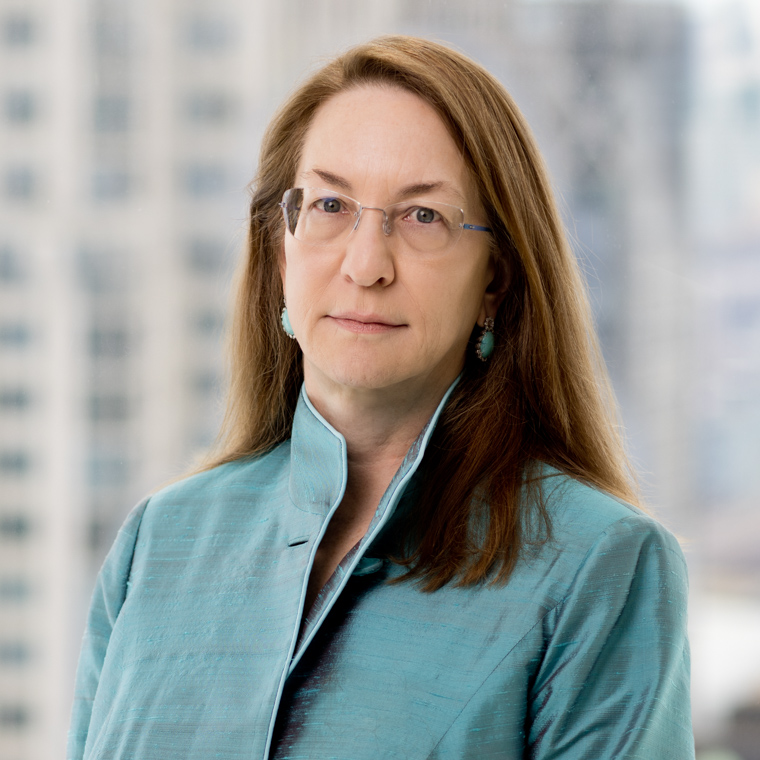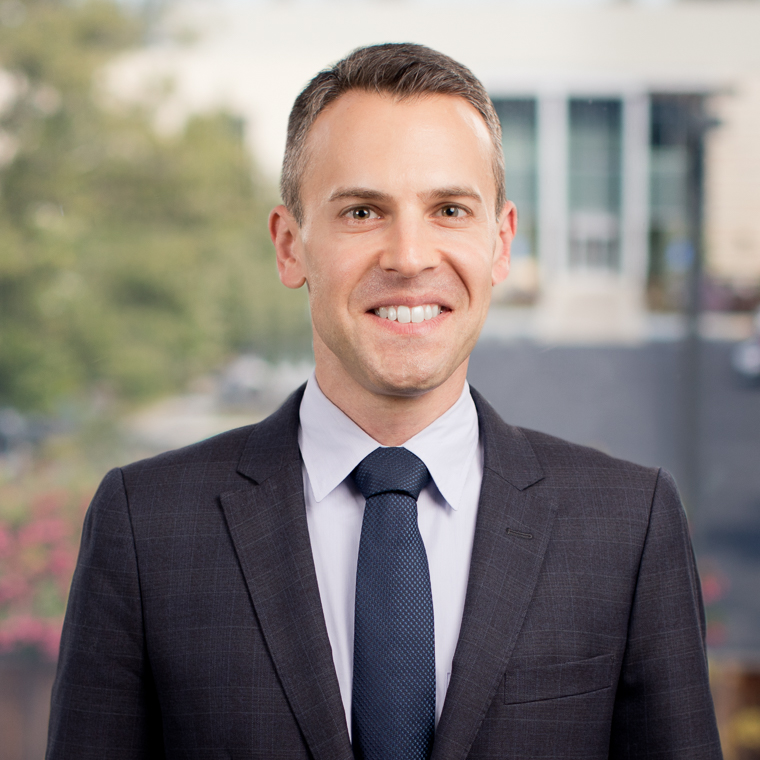Overview
On June 13, 2011, mutual fund companies and "secondary actors" in the securities markets scored a major victory when the US Supreme Court ruled that aggrieved shareholders may seek relief under the securities laws only from the party with "ultimate authority" over a false statement.1 In creating this "bright line test" for secondary actors, the Supreme Court reaffirmed that there is no private right of action for aiding and abetting securities fraud.2
In a 5-4 decision in Janus Capital Group, Inc. v. First Derivative Traders, the Court concluded that public mutual fund company Janus Capital Group, Inc. ("JCG") and its investment adviser subsidiary, Janus Capital Management ("JCM"), could not be held liable under Section 10(b) of the Securities Exchange Act of 1934 and Rule 10b-5 for false statements in prospectuses issued by mutual funds for which JCM served as investment adviser, but where neither JCM nor JCG had signed the prospectuses.3 The Court ruled that JCG and JCM did not "make" a false statement within the meaning of Rule 10b-5.
Although some commentators have suggested that the Supreme Court is letting off the hook those persons or entities who helped to draft or disseminate false statements,4 such parties are hardly insulated from all liability. First, a shareholder may bring an action attempting to hold them liable as a "controlling person" of the maker of a false statement.5 Second, the US Securities and Exchange Commission ("SEC") may police the conduct of mutual fund companies and secondary actors by pursuing aiding and abetting violations of the federal securities laws.6 Indeed, now that the Supreme Court has read the securities laws to preclude primary liability for those without "ultimate authority" over a statement, regulators may well step up their efforts to monitor the relationships between issuers and their subsidiaries, as well as the conduct of secondary actors.
Background of the Case
First Derivative Traders represented a class of shareholders of JCG, a publicly traded company, who brought suit against JCG and its wholly owned subsidiary, JCM, on the basis that JCG and JCM violated the anti-fraud provisions of the securities laws by participating in the writing and dissemination of allegedly false and misleading prospectuses issued by the Janus family of mutual funds.7 Although the mutual funds were managed by JCM and created by JCG, they were organized as a separate legal entity known as Janus Investment Fund and owned entirely by mutual fund investors.8 Janus Investment Fund had no assets, apart from those owned by the investors.9 JCM provided the funds with investment advisory services, including "the management and administrative services" necessary for their operation.10 All of the officers of the funds were also officers of JCM, but only one member of the funds' board of trustees was associated with JCM.11 As the Court noted, this was more independence than was required under the regulations governing investment companies.12
First Derivative alleged that statements in the funds' prospectuses "created the misleading impression" that JCG and JCM would implement measures to "curb market timing" in the funds.13 Following revelations that the Attorney General of the State of New York had filed a complaint against JCG and JCM alleging that JCG had actually permitted market timing in several of the funds, investors withdrew significant amounts of money from them, and JCG's stock price fell nearly 25 percent.14
First Derivative argued that if the "truth" regarding the market timing practices had been known, the funds would have been less attractive to investors and JCG would have realized lower revenues, thereby causing JCG's stock to trade at lower prices. It claimed that JCM could be held liable for the alleged misstatements in the fund prospectuses by virtue of its participation in the drafting and dissemination of the prospectuses on its website and its close relationship with the funds. It also tried to hold JCG liable for the acts of JCM as a "controlling person" under Section 20(a) of the Securities Exchange Act of 1934.15
The district court dismissed First Derivative's complaint for failure to state a claim against JCG and JCM.16 It concluded that JCG's dissemination of the prospectuses did not rise to the level of making a misstatement for securities fraud purposes and that plaintiffs had failed to demonstrate that the alleged fraud occurred in connection with the purchase or sale of a security, since there was no nexus between plaintiffs as JCG shareholders and JCM.17
But the United States Court of Appeals for the Fourth Circuit reversed, holding that First Derivative sufficiently alleged that "JCM, by participating in the writing and dissemination of the prospectuses, made the misleading statements contained in the documents" and that JCG could be held liable as a control person of JCM.18
Supreme Court Establishes Bright Line Test for Primary Liability
Majority: Only Entity with "Ultimate Authority" May Be Held Liable
In an opinion by Justice Clarence Thomas, the Supreme Court reversed the Fourth Circuit's holding. In reaching its decision, the Court first embarked on an analysis of the meaning of the word "make" in Rule 10b-5, which makes it unlawful for any person "[t]o make any untrue statement of material fact . . . in connection with the purchase or sale of any security."19 Citing the Oxford English Dictionary, the majority said the phrase "[t]o make any . . . statement" in Rule 10b-5 was the "approximate equivalent of 'to state,'" and that, "[f]or purposes of Rule 10b-5, the maker of a statement is the person or entity with ultimate authority over the statement, including its content and whether and how to communicate it."20
Analogizing the relationship between JCM and the funds to that of one between a speechwriter and speaker, the majority observed: "Even when a speechwriter drafts a speech, the content is entirely within the control of the person who delivers it. And it is the speaker who takes credit—or blame—for what is ultimately said."21 JCM did not "make" the allegedly false statements even though it had participated actively in the drafting of the prospectuses because it did not have ultimate control over their content and issuance.22 Only Janus Investment Fund—not JCM—bore the statutory obligation to file the prospectuses with the SEC and there was no allegation that JCM in fact filed the prospectuses and falsely attributed them to Janus Investment Fund. Nor was there anything on the face of the prospectuses to indicate that any statements came from JCM rather than Janus Investment Fund, "a legally independent entity with its own board of trustees[.]"23
The Court also reasoned that adopting a broader interpretation of the word "make" to include those persons or entities who contributed "substantial assistance" to the making of a statement, or to those who had otherwise helped to "create" a statement,24 would substantially undermine the Court's previous rejection of private causes of action for aiding and abetting securities fraud in Central Bank of Denver, N.A. v. First Interstate Bank of Denver, N.A.25 "[T]here must be some distinction between those who are primarily liable (and thus may be pursued in private suits) and those who are secondarily liable (and thus may not be pursued in private suits). We draw a clean line between the two—the maker is the person or entity with ultimate authority over a statement and others are not."26
The Court found further support for its reasoning in its decision in Stoneridge Investment Partners, Inc. v. Scientific Atlanta,27 in which it rejected a private securities lawsuit that had been brought under Section 10(b) against third-party customers and suppliers who allegedly engaged in undisclosed and misleading transactions that allowed a company to issue false financial statements.28 The customers and suppliers' deceptive transactions in Stoneridge and JCM's participation in the drafting of allegedly false statements both were undisclosed acts preceding the decision of independent entities to make public statements.29 Neither could form the basis for a claim under Section 10(b).
Dissent: Majority Defined "Make" Too Narrowly
In dissent, Justice Stephen Breyer took issue with the majority's interpretation of the word "make" in Rule 10b-5: "[t]he English language does not impose upon the word 'make' boundaries of the kind the majority finds determinative. Every day, hosts of corporate officials make statements with content that more senior officials or the board of directors have 'ultimate authority' to control."30 In his view, the specific relationships alleged among JCM, the funds, and the statements in the funds' prospectuses warranted a conclusion that JCM "made" those statements.31 "The relationship between JCM and [the funds]," he wrote, "could hardly have been closer."32 In addition to the fact that each of the funds' 17 officers also was a vice president for JCM, JCM furnished advice and recommendations concerning the funds' investments and was responsible for the day-to-day management of the funds' business affairs.33
Justice Breyer was particularly concerned by allegations that JCM kept the funds' trustees "in the dark" about the "true" market timing facts, which suggested to him the possibility that JCM had used an innocent intermediary for its misstatements in violation of Section 20(b) of the Securities Exchange Act.34 In such circumstances, Section 20(a) would not apply to JCM, since it requires proof of control of another person who is liable for a securities violation.35 Given the probable unavailability of Section 20(a) and a "dearth of authority construing Section 20(b)," Justice Breyer suggested that, at a minimum, the Court should have remanded the case to allow First Derivative the opportunity to amend its complaint to add a claim under Section 20(b).36
Key Takeaways for Market Participants
The Court's decision is the latest in a series of cases in which it has taken a narrow view of the scope of the implied private right of action under Section 10(b).37 Indeed, citing its earlier language in Stoneridge cautioning against expansion of that scope, the majority emphasized that, while the implied private right of action "remains the law," "[c]oncerns with the judicial creation of a private cause of action caution against its expansion," especially when "Congress did not authorize it when it first enacted the statute and did not expand upon it when it revisited the law."38 Not even the concerns about the "close relationship between investment advisers and mutual funds" expressed by the dissent warranted judicial expansion of the implied private right of action absent congressional approval.39Janus emphasizes again that "any reapportionment of liability in the securities industry" will require legislative action.40
The Court's decision also provides important clarification for all participants in the securities markets:
1. Primary liability is strictly limited to the entity that "makes" a statement. The majority drew a "clean line" between primary violators—who may be held liable in private causes of action—and secondary actors, who may not. Only those with "ultimate authority" over a statement's content and dissemination will face liability under Section 10(b) and Rule 10b-5. Absent that "ultimate authority," participation or assistance in the creation of a statement—no matter how substantial—will not be enough. Nor will republication of a statement.
2. The decision may alter the dynamic between investment advisers and mutual funds' boards of directors. The Court's decision that investment advisers may not be held liable under Section 10(b) for statements they draft but do not sign may prompt boards of directors of mutual funds to request that investment advisers themselves sign the prospectuses and thereby subject themselves to private liability under Section 10(b) in the event of any material misrepresentations or omissions.
3. Regulators still retain the ability to pursue aiders-and-abettors. Even though shareholders may not sue "once-removed" actors for statements made by others, government and industry regulators nonetheless retain the ability to bring causes of action for aiding and abetting violations of the securities laws.41 Indeed, now that the Supreme Court has read the securities laws to limit shareholders' ability to sue secondary actors for fraudulent statements, the SEC may increasingly seek to fill the void.
4. Issuers still face liability in private causes of action for violations of Section 20(a). In the private litigation context, actors still may be held liable for securities fraud committed by persons or entities that they control, provided those persons or entities had ultimate authority over a false statement and the other requirements of Sections 10(b) and 20(a) are met.
5. Plaintiffs may now attempt to use Section 20(b) of the Exchange Act to hold issuers accountable for the statements of their "innocent intermediaries." In a footnote, the majority declined to consider whether Congress created private liability for entities that act through innocent intermediaries in Section 20(b), which makes it "unlawful for any person, directly or indirectly, to do any act or thing which it would be unlawful for such person to do under the provisions of this title or any rule or regulation thereunder through or by means of any other person."42 Accordingly, the majority left open the possibility that private litigants could use Section 20(b) as a mechanism by which to hold issuers liable in such circumstances, and Justice Breyer indicated that this could be an alternative path for aggrieved shareholders.
1Janus Capital Group, Inc. v. First Derivative Traders, 564 U.S. ---, slip op. at 10-12 (2011).
2Id., slip op. at 7.
3Id., slip op. at 10-12.
4 Editorial, So No One's Responsible?, N.Y. Times, June 15, 2011, at A26.
5 Section 15 of the Securities Act of 1933, codified at 15 U.S.C. § 77o; Section 20(a) of the Securities Exchange Act of 1934, codified at 15 U.S.C. § 78t.
6 Section 20(e) of the Securities Exchange Act of 1934, codified at 15 U.S.C. § 78t(e).
7Janus, 564 U.S. ---, slip op. at 1, 3.
8Id., slip op. at 1-2.
9Id., slip op. at 2.
10Id.
11Id.
12Id. (noting that up to 60 percent of the board of a mutual fund may be composed of "interested persons" and citing 54 Stat. 806, as amended, 15 U.S.C. § 77b(a)(1), 77(b)(2), 80a-8(b), 80a-2(a)(31), 80a-29(a)-(b)).
13Id., slip op. at 4.
14Id. Because the funds compensated JCM based on the total value of the funds and JCM's management fees constituted a significant percentage of JCG's income, the loss of value in the funds arguably affected JCG's value as well.
15Id., slip op. at 9-12. Although First Derivative argued in the lower courts that JCG violated Rule 10b-5 by itself making the statements that were contained in the prospectuses, on writ of certiorari to the Supreme Court, First Derivative sought to hold JCG liable only as a control person of JCM. Because Section 20(a) applies only to those who control other parties or entities who may be held liable for securities violations, whether First Derivative stated a claim against JCG therefore depended on whether it had stated a claim against JCM. If JCM could not be held liable under Section 10(b), JCG could not be liable as a control person under Section 20(a). Id., slip op. at 5 n.5.
16In re Mutual Funds Inv. Litig., 487 F. Supp. 2d 618, 620 (D. Md. 2007).
17Id.
18In re Mutual Funds Inv. Litig., 565 F.3d 111, 121 (4th Cir. 2009) (emphasis in original).
19 17 C.F.R. § 240.10b-5.
20Janus, 564 U.S. ---, slip op. at 6.
21Id., slip op. at 6-7.
22Id., slip op. at 5.
23Id., slip op. at 11.
24 In an amicus brief filed on behalf of First Derivative, the Government argued that "make" should be defined as "create." Id., slip op. at 8.
25 511 U.S. 164, 180 (1994).
26Janus, 564 U.S. ---, slip op. at 7 and n.6.
27 552 U.S. 148 (2008).
28Id. at 166-67.
29Janus, 564 U.S. ---, slip op. at 9.
30Id., slip op. at 3 (Breyer, J., dissenting).
31Id., slip op. at 2 (Breyer, J., dissenting).
32Id., slip op. at 13-14 (Breyer, J. dissenting).
33Id., slip op. at 13 (Breyer, J. dissenting).
34Id., slip op. at 9-11, 13 (Breyer, J., dissenting).
35Id., slip op. at 9 (Breyer, J., dissenting) (citing Morrison v. Nat'l Australian Bank, Ltd., 561 U.S. ---, ---, n.2 (2010) ("Liability under § 20(a) is obviously derivative of liability under some other provision of the Exchange Act."))
36Id., slip op. at 10-11 (Breyer, J., dissenting) (citing 5B A. Jacobs, Disclosure and Remedies Under the Securities Law § 11-8, p. 11-72 (2011)).
37See, e.g., Stoneridge, 552 U.S. at 165; Dura Pharms., Inc. v. Broudo, 544 U.S. 336 (2005) (securities fraud plaintiffs must allege and prove that they suffered economic loss as a result of defendants' misrepresentations); Central Bank, 511 U.S. at 180.
38Janus, 564 U.S. ---, slip op. at 6 (citing Stoneridge, 522 U.S. at 165-67).
39Id., slip op. at 10.
40Id.
41 15 U.S.C. § 78t(e).
42Janus, 564 U.S. ---, slip op. at 10 n.10.


